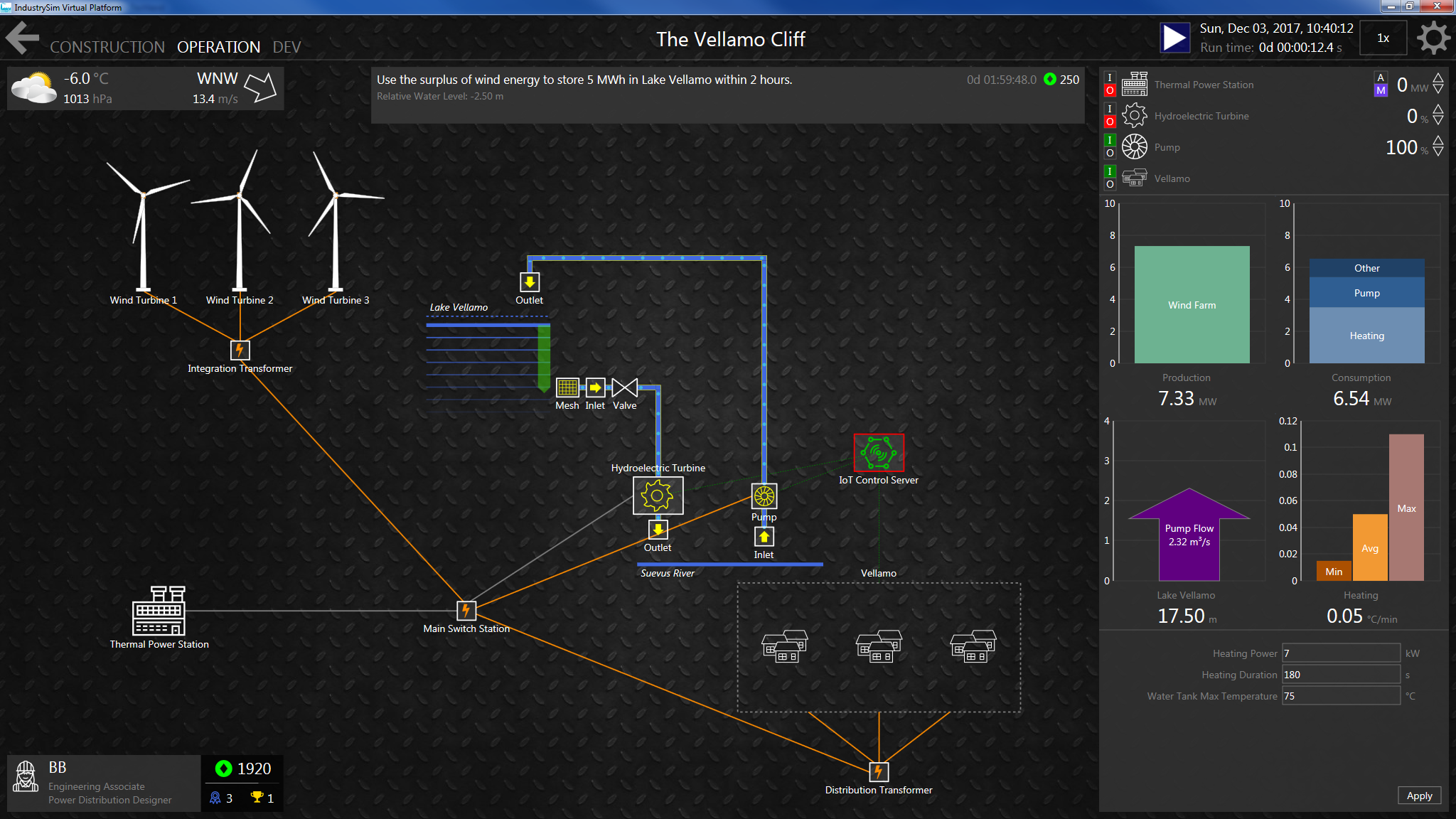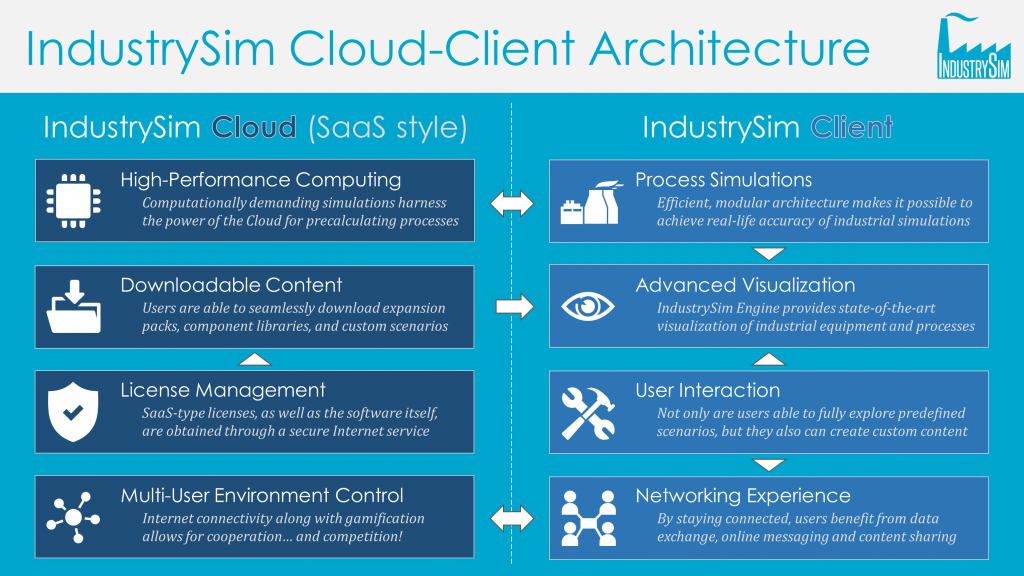Our Software
Our software product, the IndustrySim Virtual Platform is a digital environment where the users are able to observe and interact with simulations of diverse industrial processes.
Using the system resembles working with a professional simulation sandbox, and – on the other hand – playing a modern video game. It represents the best of both worlds.
What is very important, all simulations are very accurately calculated, which makes the system suitable for professional use. The most up-to-date rendering techniques are utilized to achieve fluid, modern-style graphics. All detailed analytical data is available.
Fig. 1. The operation view of the IndustrySim Virtual Platform.
The product is meant primarily for industrial companies, where it improves the following business processes:
Education and Training
Employee training (also: college and university education). Based on simulation scenarios provided by experts or created by educators. The gamification is a key factor for this process, making it more effective by an order of magnitude.
Engineering Innovations
The system allows to quickly create preliminary designs, e.g. for components and production lines, and test new solutions in a proven simulated environment. It can then serve as a virtual research lab for industrial solutions. An example application would be to research the Internet of Things applications in the Energy industry.
Marketing of Products
Our approach is “the marketing of truth”. The system allows the manufacturers to prove, in an engineering and scientific way, that their products work better than the competitor’s ones. For example, by simulating the emissions, one could show that his product is actually environment-friendly (which justifies a larger price of it). Also, every process is represented with its monetary value so that the user can see how her/his investment would pay.
Users may use predefined scenarios for multiple industries; they may also provide and publish their own designs of factories and components. This data can be imported from external CAD modelling tools; the system itself is rather for simulation than for graphical modelling.
The product is generally meant for B2B market (the small and mid-size industrial companies are the largest part of it), but it is also applicable for private users who would like to learn and play with industry. Thanks to gamification, it can then work as a pure game.
Fig. 2. The architectural sketch of the IndustrySim Virtual Platform.
Simulation Engine
Beneath the hood of the IndustrySim Virtual Platform there is an ambitious and highly realistic simulation of industrial processes. More content is layered on top of it but the heavy-duty simulation algorithms ensure that experimenting with non-standard factory layouts is not only supported but also provides reasonably accurate results. Parts of the simulation engine can be switched on and off as needed, enabling supervisors and single-license users to adjust difficulty and complexity for individual scenarios.
Just like the training scenario content, the simulation engine content is modular. New types of industrial plants will be added throughout the product life cycle. Our ultimate goal for the simulation engine is to enable the player to combine and experiment with different kinds of industries, plant setups, component combinations and so forth, perhaps even producing new data that would have applications in the real world. We are not there yet but it is definitely part of the IndustrySim vision. Modularity also enables custom builds for training purposes. This enables large industry clients to focus on specific types of industries, processes and components relevant to their particular needs.
With the IndustrySim Virtual Platform Plug-in Tools an innovator is able to see how a new component or design interacts with other process equipment and systems. The simulations within IndustrySim allow the manufacturer to prove to customers that their solution will be mutually profitable. Gamification of simulations makes discovering new ideas and making innovations enjoyable.
Finally, the simulation engine allows comprehensive data gathering of the user activities. The analytics data will be gathered into a database. Over time, it forms ”Big Data” that will allow not only the single user to learn how well he succeeded but also gives industrial and educational organizations valuable information how their teams or students are progressing. The analytics will open up a whole new avenue of possibilities for eLearning by providing extensive feedback on both individual and organizational levels.



Leave a Reply
You must be logged in to post a comment.